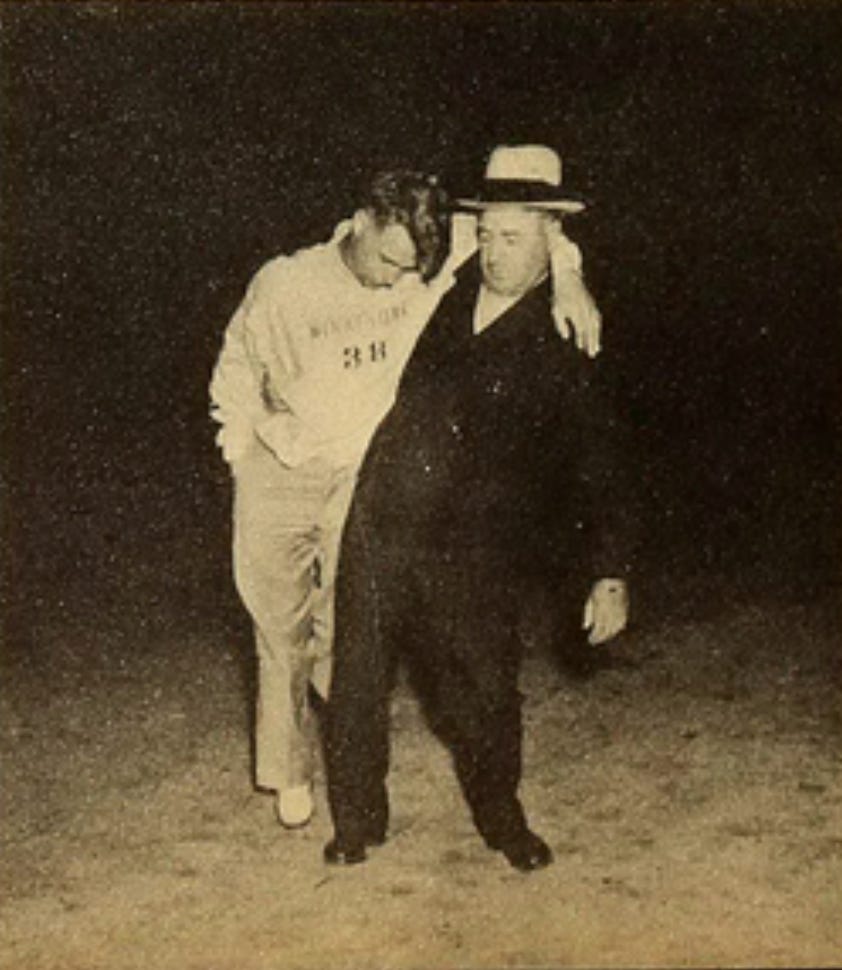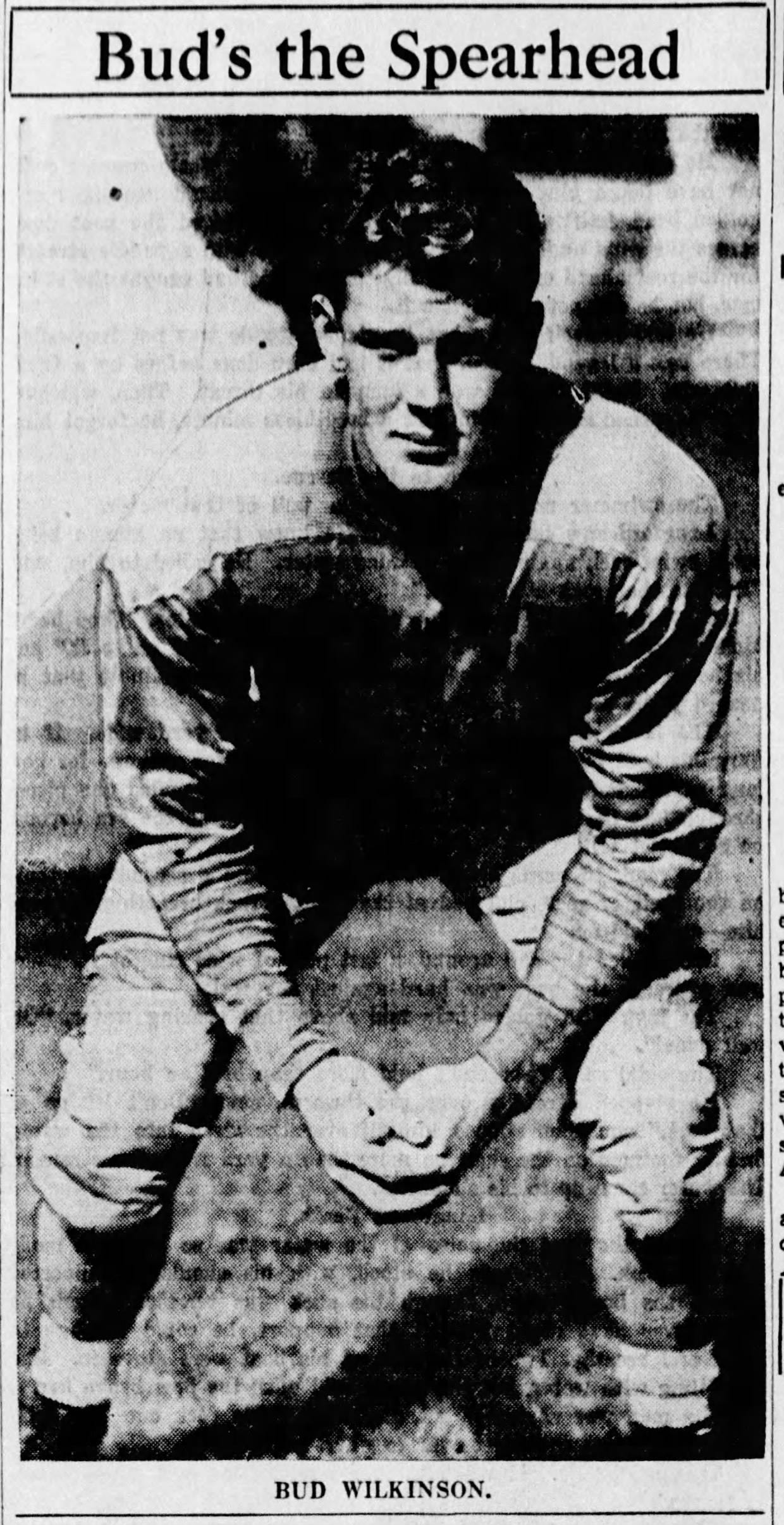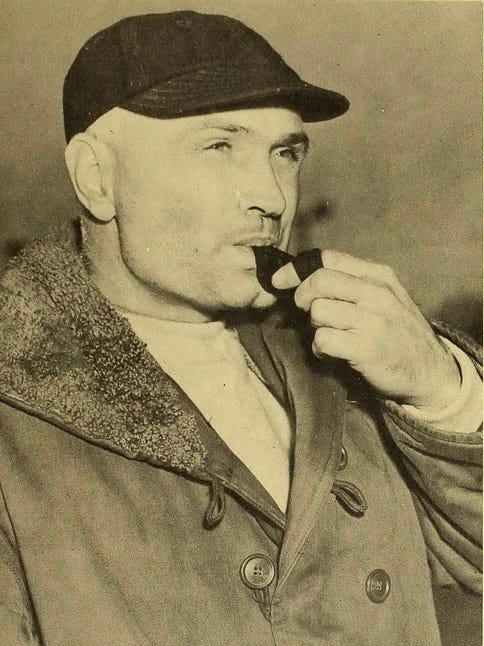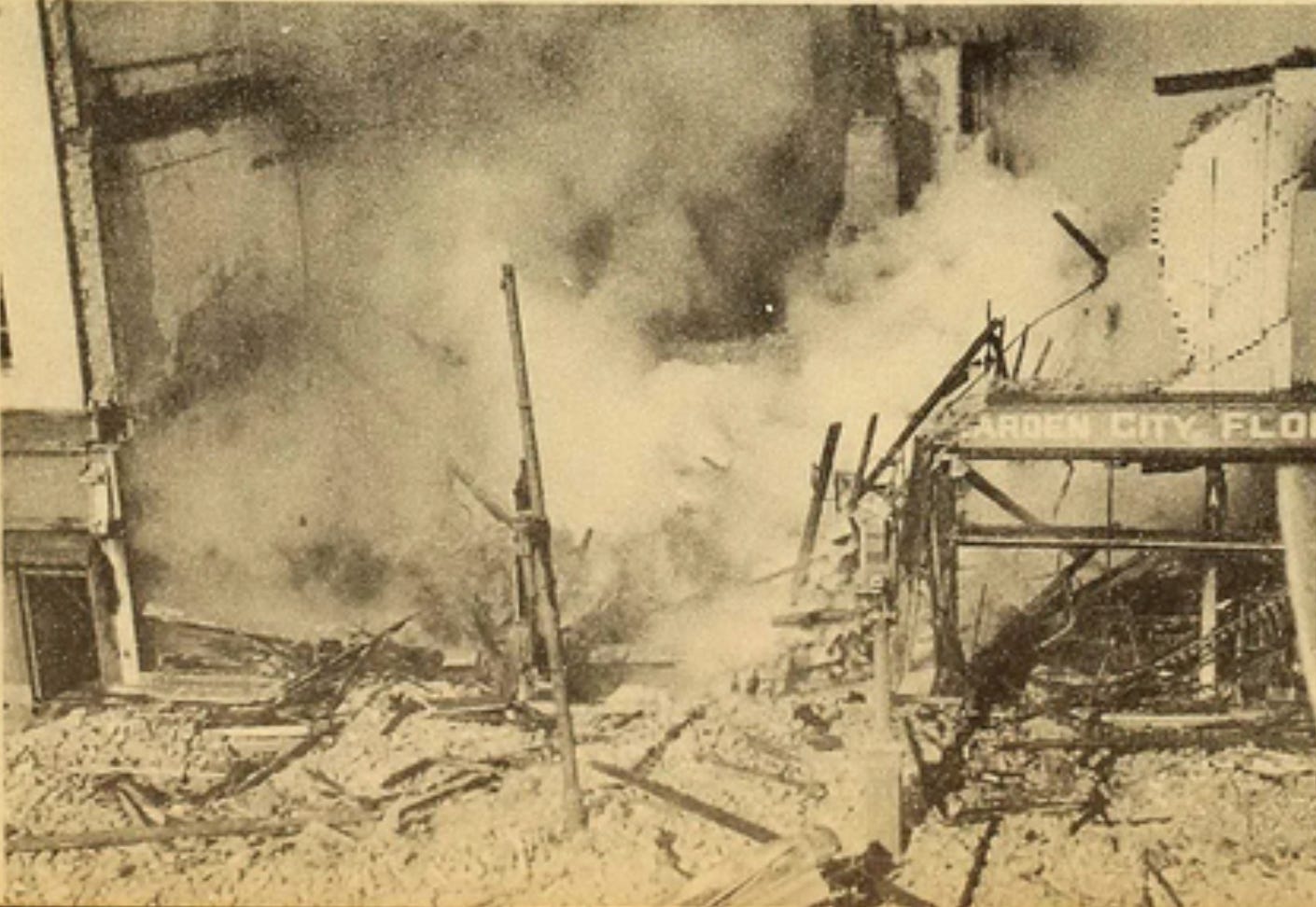Today's Tidbit... When The Gophers Played With Fire
The Tidbit from a week ago covered the itinerary and game during the Minnesota Gophers' trip to play Washington in Seattle in 1941. Last week’s story mentioned that Minnesota made the same trip in 1936 but said nothing about those events. However, an alert reader, Phil Allen, recalled that the Minnesota team experienced a fire at their hotel during one of the trips to Seattle, so I looked into the claim and found it was true.
The 43 members of the 1936 Minnesota traveling party left the Twin Cities aboard a mix of train cars that included a Pullman sleeping berth for each member, though they planned to spend one night at a hotel in Missoula, Montana. Minnesota's coach, Bernie Bierman, played at Montana before the Great War and then coached the team on his return, so the university and town hosted Bierman and his team on Thursday as they traveled to Seattle.
After practicing and enjoying a few other activities, the team bedded down in the 175-room Florence Hotel for the night. About four in the morning, however, Edward Shaver, a Minneapolis reporter, awoke to the smell of smoke, initially dismissing it as coming from area wildfires. When the smoke intensified, he opened the door to the hallway, saw smoke, and ran downstairs to alert the hotel officials in the lobby.
Nowadays, you would expect Ed Shaver to pull the fire alarm, but those devices did not exist in most hotels in the 1930s, so the desk clerk, bellboy, and night watchman began calling each room and knocking on doors throughout the hotel to wake their 125 guests.
The coaches, players, and other guests scrambled down the stairs or the fire escapes, and after Coach Bierman held a roll call, they found two players were missing. Assistant coach Bert Baston ran back into the hotel looking for his position players before returning when the smoke forced him back. Fortunately, the missing players had exited via a fire escape, and no one was seriously injured by the fire that consumed the entire building, leaving only three of the four walls standing.
Some in the hotels had thrown on clothes before exiting; others stood on the street wearing pajamas and no shoes. Everything left in the hotel became a total loss, including all other clothing and personal effects such as rings, watch charms, and other awards received by the two-time national champion Gopher team. All the team's training equipment was also lost, but other than some feeling ill from the smoke, they avoided tragedy, and the team spent the rest of the evening in the Pullman cars back at the train station.

After practicing again in Missoula on Friday, they boarded the train to Seattle, arriving in time for their Saturday game. Despite some concern that the fire might adversely affect the team's play, the Gophers responded well, winning 14-7.
Adding insult to injury, a thief accessed the Gopher locker room during the game, stealing whatever money, watch charms, and other valuables were not lost in the fire. The University of Washington agreed to reimburse the Gophers for those losses, while Josten’s, who created the gold charms for the 1935 team, promised to replace the charms at no cost.
Despite a rough start and a 6-0 loss at Northwestern midway through the year, the Gophers finish 4-1 in the Big Ten and 7-1 overall. Meanwhile, Northwestern finished 6-0 in the Big Ten but suffered a bad season-ending loss to Notre Dame. That combination meant Northwestern was the Big Ten champ, while Minnesota earned the national championship despite finishing second in the conference.

Click here for options on how to support this site beyond a free subscription.





A side note about hotel fires. Apparently they were very common in the first half of the 20th century. To the point where hotels advertised that they were “fireproof”. Searching newspapers.com for “fireproof hotel” has hits peaking in the 1920-1940 range. Here’s a photo, taken in the 1960s, of an old hotel in San Diego with “Fireproof Hotel” painted on the outside: https://ebydurbin.net/sandiego60s/wp-content/uploads/2023/12/Slides_02_064-scaled.jpg